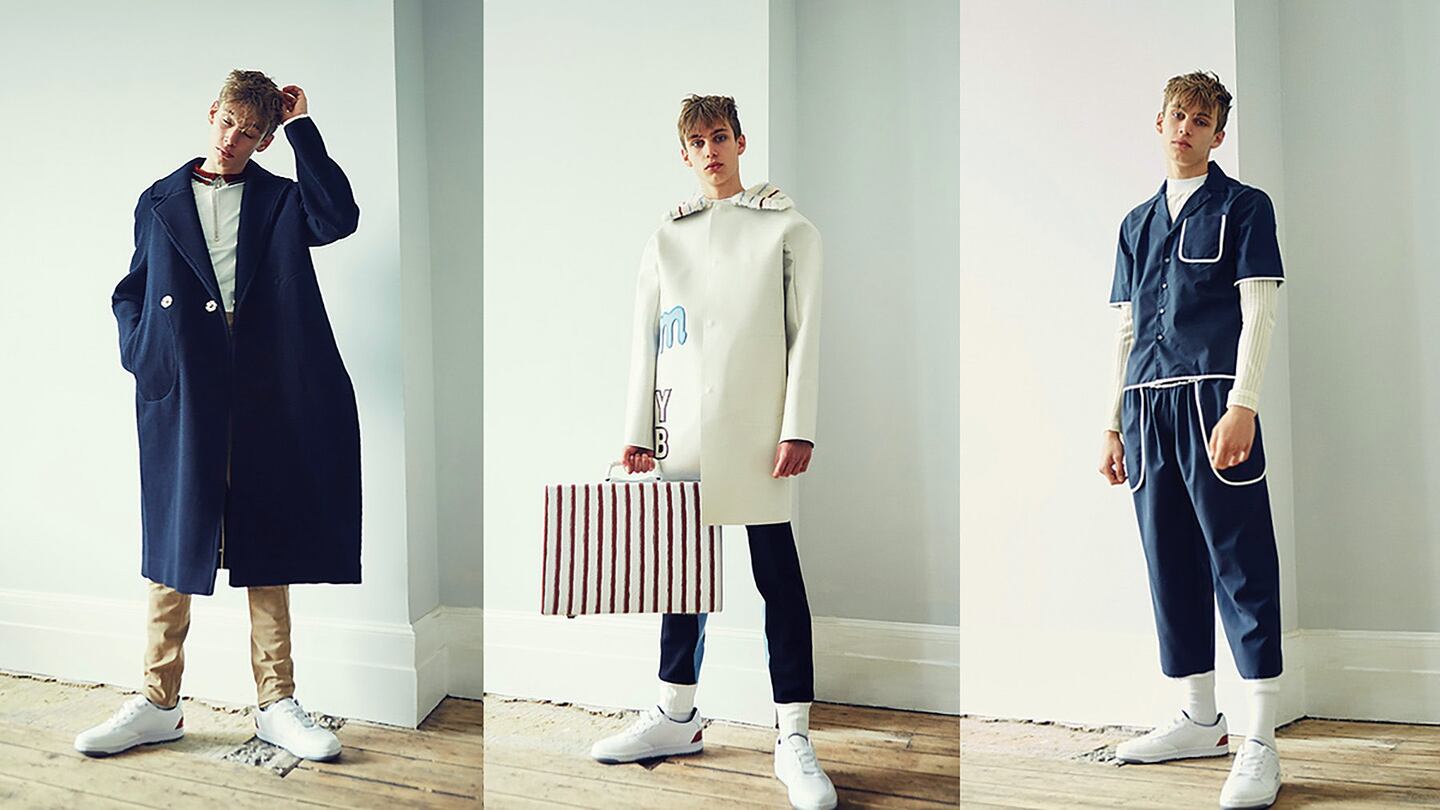
The Business of Fashion
Agenda-setting intelligence, analysis and advice for the global fashion community.

Agenda-setting intelligence, analysis and advice for the global fashion community.

LONDON, United Kingdom — From Brixton to Hackney, London is facing rapid gentrification. Rising rent prices and on-going redevelopments are familiar across the city — a situation Daniel W. Fletcher is acutely aware of. "It's really inconsiderate," said the British menswear designer, whose Autumn/Winter 2015 collection was inspired by the impact of the city's gentrification. "I lived in Peckham for a few years because it was affordable. Today, it's become really trendy and many low-income residents who have lived there for years are being forced out, due to the rise in rent."
Hailing from Chester in the north-west of England, Fletcher first took an interest in menswear when he enrolled on an art foundation course at Kingston University. “I was encouraged to give menswear a try. It made so much more sense to me than womenswear,” Fletcher explained. “There are a lot of rules and boundaries in menswear. You’ve got to find ways to bend these rules and come up with designs that are interesting, but still have relevance to real clothes. I liked that challenge.”
Fletcher's foundation year at Kingston led to a four-year BA degree in fashion design at Central Saint Martins, during which he undertook a handful of internships at James Long in London and Lanvin and Louis Vuitton in Paris. The experience proved to be invaluable. “I wasn’t sitting in front of the computer all day doing flat drawings. It was really hands-on and I was able to learn techniques that I now implement into my own work,” he said.
In today’s highly competitive market, many fashion design graduates fresh out of universities like Central Saint Martins and Parsons are hesitant about rushing in to set up a business, opting instead to join an existing label or design house. “It’s quite tricky launching your own label,” said Fletcher. “Some [independent designers] have been really successful, but they still run into problems.”
ADVERTISEMENT
Nonetheless, Fletcher remains upbeat: “I’m taking it one day at a time,” he said.
For Autumn/Winter 2015, Fletcher's collection of wool overcoats, fox fur bomber jackets, mink-collared polo shirts and silk pyjama sets fuse elements of British heritage with streetwear details and fabric. "I looked at the early collections of Hardy Amies and photography by Alasdair McLellan and I sought to create this mixture of the two worlds," said the designer, referring to Aimes' impeccable Savile Row tailoring heritage and McLellan's photographic work, which contains a certain candidness.
Fletcher has been able to finance and execute his label through a variety of means, including working at Victoria Beckham throughout his final year at university and through brand sponsorships from Saga Furs and Inditex, the Spanish behemoth that owns Massimo Dutti and Zara. "Inditex sponsored the footwear for my graduate collection. I was able to choose nine pairs of shoes from within their brands and customise them to fit my designs," he explained. "Saga Furs provided me with the materials for my collection. I spent a week at their design studio, just outside of Copenhagen, where I was trained on the sustainability, production and design processes of using fur."
While Fletcher is yet to secure his first batch of stockists, the designer is optimistic and hopes to be able to scale his business. "I'd like to be placed in a department store next to labels such as Acne Studios or JW Anderson. I see myself as part of that group. I'm also quite interested in developing footwear and eyewear. Most of all, I'm looking forward to seeing people wearing my clothes. After all, I'm designing clothes for people to wear."
Editor's Note: This article was revised on August 17th 2015. A previous version of this article quoted Daniel Fletcher stating that Hussein Chalayan had gone bankrupt three times. This is incorrect. The brand entered voluntary liquidation 16 years ago, in order to dissolve a partnership.
From analysis of the global fashion and beauty industries to career and personal advice, BoF’s founder and CEO, Imran Amed, will be answering your questions on Sunday, February 18, 2024 during London Fashion Week.
The State of Fashion 2024 breaks down the 10 themes that will define the industry in the year ahead.
Imran Amed reviews the most important fashion stories of the year and shares his predictions on what this means for the industry in 2024.
After three days of inspiring talks, guests closed out BoF’s gathering for big thinkers with a black tie gala followed by an intimate performance from Rita Ora — guest starring Billy Porter.